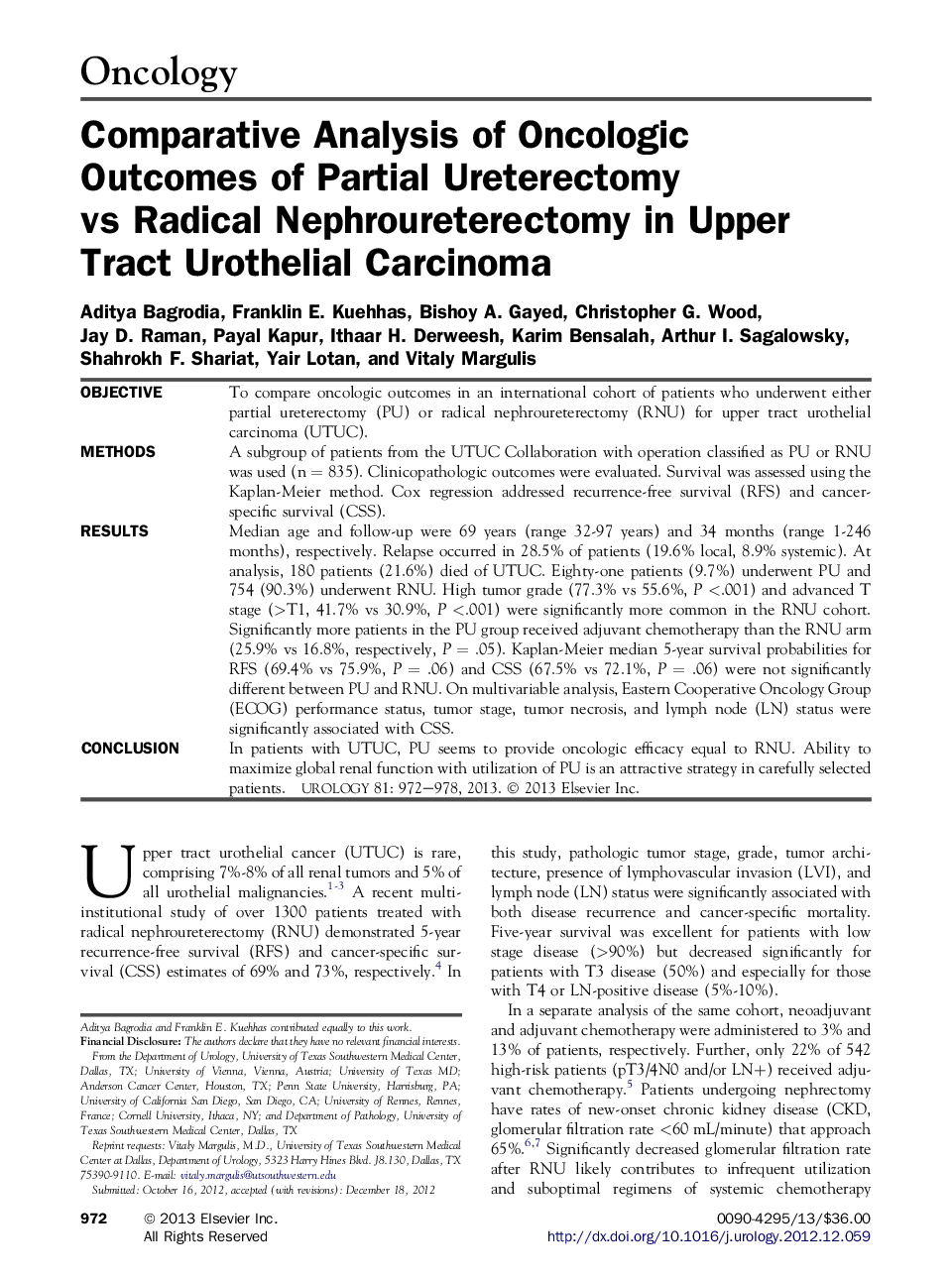| Article ID | Journal | Published Year | Pages | File Type |
|---|---|---|---|---|
| 6167383 | Urology | 2013 | 7 Pages |
ObjectiveTo compare oncologic outcomes in an international cohort of patients who underwent either partial ureterectomy (PU) or radical nephroureterectomy (RNU) for upper tract urothelial carcinoma (UTUC).MethodsA subgroup of patients from the UTUC Collaboration with operation classified as PU or RNU was used (n = 835). Clinicopathologic outcomes were evaluated. Survival was assessed using the Kaplan-Meier method. Cox regression addressed recurrence-free survival (RFS) and cancer-specific survival (CSS).ResultsMedian age and follow-up were 69 years (range 32-97 years) and 34 months (range 1-246 months), respectively. Relapse occurred in 28.5% of patients (19.6% local, 8.9% systemic). At analysis, 180 patients (21.6%) died of UTUC. Eighty-one patients (9.7%) underwent PU and 754 (90.3%) underwent RNU. High tumor grade (77.3% vs 55.6%, P <.001) and advanced T stage (>T1, 41.7% vs 30.9%, P <.001) were significantly more common in the RNU cohort. Significantly more patients in the PU group received adjuvant chemotherapy than the RNU arm (25.9% vs 16.8%, respectively, P = .05). Kaplan-Meier median 5-year survival probabilities for RFS (69.4% vs 75.9%, P = .06) and CSS (67.5% vs 72.1%, P = .06) were not significantly different between PU and RNU. On multivariable analysis, Eastern Cooperative Oncology Group (ECOG) performance status, tumor stage, tumor necrosis, and lymph node (LN) status were significantly associated with CSS.ConclusionIn patients with UTUC, PU seems to provide oncologic efficacy equal to RNU. Ability to maximize global renal function with utilization of PU is an attractive strategy in carefully selected patients.
